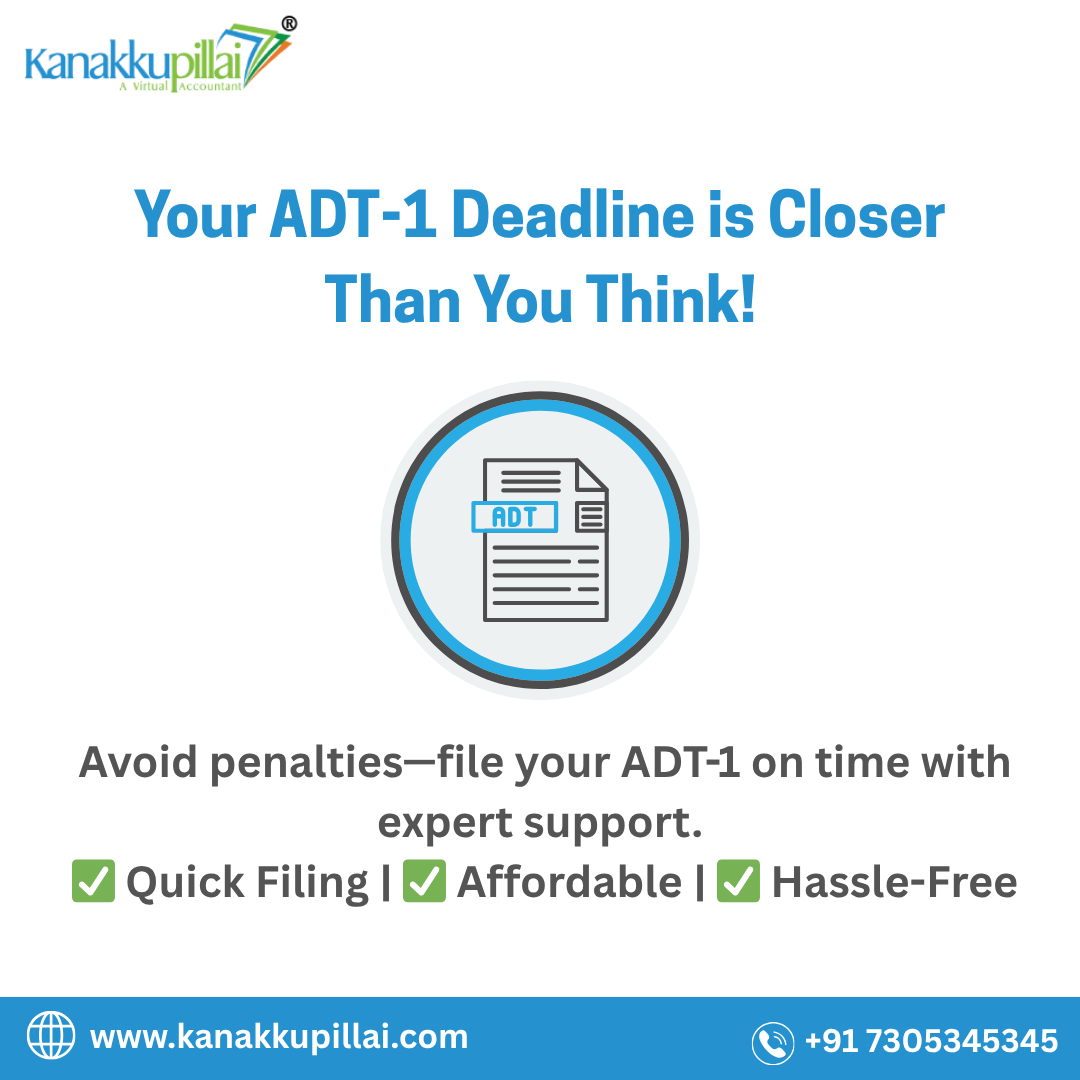When a company appoints an auditor, it must inform the Registrar of Companies (ROC) using Form ADT-1. This filing is required under the Companies Act, 2013. The process ensures that the government has accurate records of who audits a company’s financial statements.
Filing ADT-1 might sound technical, but once you understand the steps, it’s a simple compliance task every company can manage smoothly.
What is Form ADT-1?
Form ADT-1 is an electronic form that a company submits to the Ministry of Corporate Affairs (MCA) to notify the appointment of an auditor. It helps the government track auditors and maintain transparency in corporate financial reporting.
Purpose of Filing ADT-1
The main goal of an ADT-1 filing is to officially declare that a company has appointed an auditor to audit its books of account. This helps maintain compliance and builds trust among shareholders, regulators, and investors.
Applicability of ADT-1 Filing
Every company—private limited, public limited, or one-person company—is required to file ADT-1 whenever an auditor is appointed or reappointed. It’s applicable to both small startups and large corporations alike.
Legal Provisions Under the Companies Act, 2013
Under Section 139(1) of the Companies Act, 2013, every company must appoint an auditor at its first Annual General Meeting (AGM) and inform the ROC of this appointment within 15 days through Form ADT-1.
Who Needs to File Form ADT-1?
The company, not the auditor, is responsible for filing Form ADT-1. Whether it’s a new appointment or a reappointment, the responsibility lies with the company management.
Due Date for ADT-1 Filing
The due date to file ADT-1 is within 15 days from the date of appointment of the auditor at the AGM or Board Meeting. For example, if your AGM is held on 30th September, you must file ADT-1 by 15th October.
Documents Required for Filing ADT-1
To successfully file Form ADT-1, you’ll need the following documents:
- Appointment Letter: Issued to the auditor confirming their appointment.
- Board Resolution: A certified copy of the board resolution approving the appointment.
- Consent Letter from Auditor: A formal letter from the auditor accepting the appointment as required under Section 139(1).
- Certificate from Auditor: A declaration from the auditor stating that they meet the eligibility criteria under Section 141.
Step-by-Step Procedure to File ADT-1
Let’s break down the process into simple steps:
Step 1: Log in to the MCA Portal
Go to www.mca.gov.in and sign in with your registered ID.
Step 2: Download the e-Form
Under the “Forms & Downloads” section, download Form ADT-1.
Step 3: Fill in the Details
Enter company details like CIN, auditor’s name, firm registration number, and appointment date.
Step 4: Attach Required Documents
Attach the appointment letter, board resolution, and auditor’s consent letter.
Step 5: Affix Digital Signature
A Director or Company Secretary must digitally sign the form.
Step 6: Upload and Pay Fees
Upload the signed form on the MCA portal and pay the prescribed filing fees.
Filing ADT-1 for First Auditor vs. Subsequent Auditor
For a first auditor, the Board of Directors appoints the auditor within 30 days of incorporation, and the ADT-1 filing is optional.
For subsequent auditors, the appointment is made at the AGM, and ADT-1 filing is mandatory within 15 days.
Penalties for Late or Non-Filing of ADT-1
Failing to file ADT-1 within the deadline can result in penalties. The company and its officers may be liable for additional fees that increase with delays and potential compliance scrutiny.
Common Mistakes to Avoid During ADT-1 Filing
- Incorrect CIN or company details
- Missing attachments
- Using an outdated form
- Forgetting the digital signature
- Late filing beyond 15 days
Benefits of Timely ADT-1 Filing
- Legal compliance under the Companies Act
- Avoids penalties and delays
- Builds credibility for the company
- Ensures transparency with stakeholders
- Keeps the company’s MCA records up-to-date
How Professionals Can Help in Filing ADT-1
If you find compliance filing complex, professionals such as Company Secretaries or Chartered Accountants can file ADT-1 on your behalf. They ensure accuracy, timely submission, and compliance with the law.
Conclusion
Filing Form ADT-1 is not just a formality—it’s an essential compliance requirement that reflects your company’s commitment to transparency and good governance. Whether you’re a small business or a large corporation, timely filing ensures your records stay clean and penalties are avoided.
If you want a smooth and error-free filing process, consider taking expert help from professionals experienced in ADT-1 Filing.





Comments